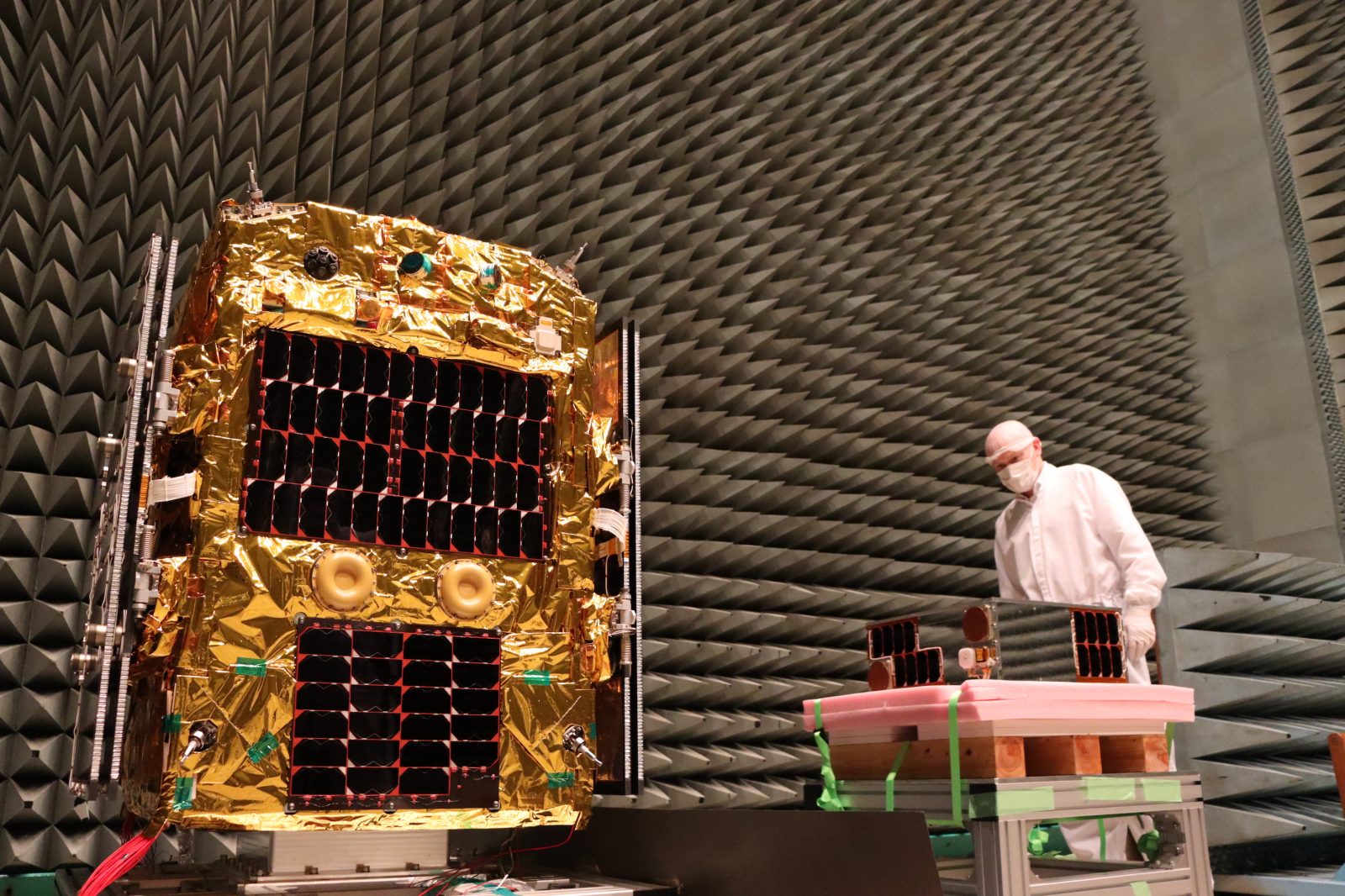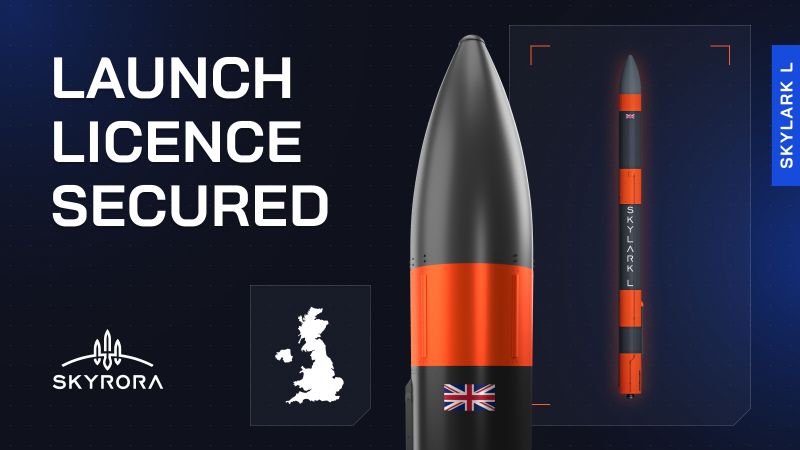UK Space Shake-Up: What the UKSA Reform Means for 3D Printing in Space
⚓ p3d 📅 2025-08-21 👤 surdeus 👁️ 13The UK government has announced that the UK Space Agency (UKSA) will be absorbed into the Department for Science, Innovation and Technology (DSIT) by April 2026. The decision is framed as part of a wider “Plan for Change” to — as they specify — cut bureaucracy, streamline oversight, and bring policy and delivery under one roof.
 While the move has raised questions about whether it will help or hurt Britain’s place in the global space race, it could have a real impact on 3D printing in the space sector. From satellites to in-orbit servicing, UK companies are already using additive manufacturing (AM) to design lighter, stronger, and more cost-effective components. The result could mean faster progress for 3D printing in space, or new hurdles for the companies using it.
While the move has raised questions about whether it will help or hurt Britain’s place in the global space race, it could have a real impact on 3D printing in the space sector. From satellites to in-orbit servicing, UK companies are already using additive manufacturing (AM) to design lighter, stronger, and more cost-effective components. The result could mean faster progress for 3D printing in space, or new hurdles for the companies using it.
What’s Changing at the UKSA
According to the government, UKSA will keep its name but become a unit within DSIT. The shift is being described as a way to “cut duplication, reduce bureaucracy, and ensure clear ministerial oversight.”
Along with this restructuring, the government also released more than 60 new industry recommendations on how to regulate emerging space activities. One key focus is on Rendezvous and Proximity Operations (RPO), which is when spacecraft dock or work together in orbit. These maneuvers are essential to the growing field of in-orbit servicing, assembly, and manufacturing (ISAM), which includes everything from refueling and repairing satellites to eventually building or 3D printing new structures in space.
The government estimates that with the right regulatory environment, UK companies could capture up to 25% of the global ISAM market, valued at £2.7 billion ($3.6 billion) by 2031. That’s a market where 3D printing is expected to play a key role.

Orbex Prime rocket. Image courtesy of Orbex.
Why Additive Manufacturing Matters for Space
For space, 3D printing is a great advantage. It helps make lightweight lattice structures, complex geometries, and rapid prototypes that are difficult or impossible with traditional manufacturing. In space, every gram counts, and AM helps reduce payload weight while making parts more useful.
For the UK, which has built up expertise in small satellites, launch services, and space instrumentation, AM makes sense. Companies use it to build satellite components, rocket engines, and even concepts for in-orbit construction. The long-term vision is to make spare parts, refueling systems, or even entire spacecraft directly in space, without relying on costly launches from Earth — that’s actually what a lot of countries are aiming for.

Electromagnetic compatibility testing for Astroscale’s ELSA-d on February 2020. Image courtesy of Astroscale
Some companies rooted in the UK or connected to it are already active players in this area:
- Airbus UK in Stevenage works on the European Space Agency‘s (ESA) projects and uses AM for spacecraft structures and satellite parts. Airbus has explored 3D printed brackets, antennas, and components for Mars rover missions.
- Skyrora in Edinburgh is a launch startup that has adopted AM for rocket engines and small satellite launch systems. Its Skyprint 2 machine in Scotland produces large-format rocket parts.
- Orbex in Forres, Scotland, is another launch company. Orbex manufactures entire rocket engines in-house with 3D printing, using lightweight alloys designed for efficient satellite launches.
- Astroscale UK, based in Harwell, is focused on space debris removal but also works on RPO and servicing, areas that connect directly with additive technologies for repairing and replacing satellite components in orbit.
- D-Orbit and ClearSpace UK operations are both involved in the new RPO Sandbox report, exploring future markets where 3D printing of parts or structures in orbit will be essential.
All these companies show how the UK has built an ecosystem where AM and space intersect. So it’s no surprise that the reform could lead to both hopes and concerns.

Skyrora secures the UK’s first launch licence. Image courtesy of Skyrora.
On the positive side, the government promises less red tape, faster decision-making, and stronger links between policy and delivery. That could make it easier for companies using AM to test, certify, and scale new technologies, speeding up the adoption of 3D printed components. The move into DSIT could also make it easier to connect space funding with broader innovation priorities, such as advanced manufacturing and AI. Clearer rules around activities like RPO and ISAM could also give investors more confidence to put money into UK firms working on 3D printing for space.
But then, on the other hand, there is a risk that the move slows things down in the short term, with projects having to adjust to new structures and approvals. Some critics suggest that the move could land UKSA in even larger bureaucracy, leading to delays in grants, contracts, or licenses (especially for startups that really depend on the support). Just a few hours after the news was revealed by the UK government, there have been comments that it could cut the UK’s independent voice in global space partnerships, where 3D printing technologies are becoming central to manufacturing. And since the transition won’t be finished until April 2026, the change could leave projects unsure about continued UKSA support. But we’ll have to see what happens, as a lot of what is being said on the side right now is all pretty uncertain.
Space Minister Sir Chris Bryant suggested that the merger would “bring much greater integration and focus to everything we are doing while maintaining the scientific expertise and the immense ambition of the sector.”
And UKSA CEO Dr. Paul Bate said the change would make it “faster and easier to translate the nation’s space goals into reality.”
But scientists like Dr. Simeon Barber of the Open University warned in a BBC interview that it could leave Britain “losing focus” compared to countries doubling down on independent space agencies. For the AM community, the question is whether the UK can move quickly enough to secure its share of ISAM or risk falling behind.
A Critical Moment for Space 3D Printing
The UK’s space change comes at a time when universities and industry are pushing new ideas for how to build and sustain infrastructure in orbit. Recent research ranges from magnet-based systems to make oxygen in space from the University of Warwick to ultra-light solar sails for fuel-free propulsion from researchers at the University of Nottingham.
For 3D printing, we are sure that the technology is moving from Earth to orbit. Companies like Skyrora and Orbex already use AM to build rocket parts more efficiently on the ground. The next step is to apply the same tools in space, repairing satellites, producing spare parts, or even printing new modules above Earth. If the regulatory reforms work as planned, the UK could position itself as a hub for this new wave of in-orbit manufacturing.
In fact, Nick Shave, Managing Director at Astroscale UK, pointed out that, “RPOs are the foundation of all in-orbit servicing, from life-extension and refuelling to active debris removal – and with the right regulatory framework, the UK can be a global leader in this transformative sector. The recommendations in this report tackle the real bottlenecks industry faces today, providing clarity, proportionality, and the confidence investors need. We look forward to working with government, regulators, and our fellow innovators to turn these proposals into action, ensuring the UK captures the economic and sustainability opportunities of a truly serviceable space sector.”
By joining DSIT, the UK Space Agency enters a new phase in driving the nation’s space ambitions. The outcome will depend on whether the new structure can deliver faster support and clearer rules without slowing innovation. For companies pushing 3D printing into space, the next few years will be super important, offering them a chance to confirm a leading role in in-orbit manufacturing, or the risk of falling behind as the global competition advances.
🏷️ p3d_feed